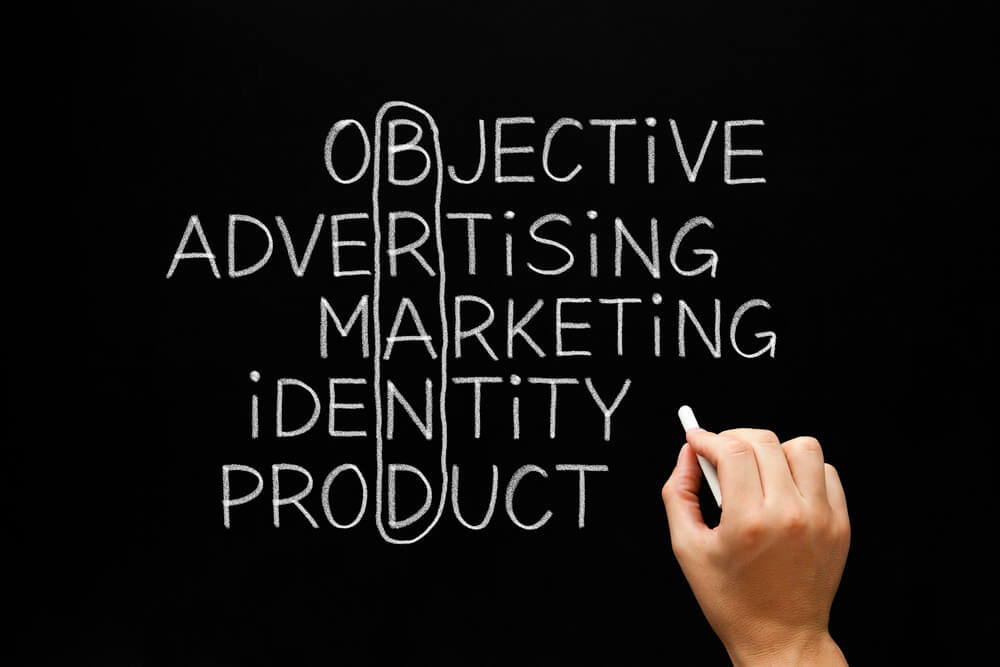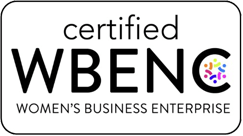The Importance Of Building A Strong Brand Equity
Building a positive brand equity is critical for the survival and growth of any company. By comprising all the associations, emotions and feelings that customers experience regarding your business, brand equity is essential no matter what stage your business is at.
When it comes to healthcare, biotechnology or pharmaceutical industries though, knowing how to create, build and maintain a strong brand equity is not only a matter of survival and growth, but also vital for developing credibility.
In addition to raising your brand’s reputation to stand out amongst competitors, businesses in the life-sciences field must also establish trust, reliability and value in the marketplace. For any company that offers products and services which involve people’s health and wellbeing, having a trustworthy and compelling brand image is essential.
The path towards building brand value and equity in a fast moving and competitive sphere might seem quite challenging for many. That’s why, in today’s post we’ll discuss five essential steps that can help your life science organization reach its potential value and secure customer loyalty.
What Is Brand Equity And How To Build It
Before looking at our suggested methods of building brand equity for the life sciences, let’s first discuss what brand equity actually means.
A company’s brand equity sets how its overall value is perceived by customers, and the level it reaches in the buyer’s subconscious. More than just an eye-popping logo, a nice sounding name or a shiny business card, brand equity represents the strength and valorization of a brand, how it connects with prospects emotionally and how it differentiates amongst competitors. Therefore, a brand’s equity influences how consumers act, think and feel in relation with a product or service, and most importantly, how it influences their purchase decision.
There are many ways around how to build brand equity, but today we’ll focus on the ones we deem most important:
1. Building Brand Equity By Raising Awareness
Your brand’s awareness represents the extent to which your target customers are familiar with your brand and the way they perceive it. It’s easy to understand why building brand equity through raising awareness is essential when looking for how to launch and market scientific products.
In this day and age when consumers are faced with such a wide choice, a memorable, ethical and innovative brand will not only attract attention and interest from clinicians and healthcare providers, but will also earn their trust and loyalty.
As much as healthcare and biotechnology industries are driven by increased consumer choice, these choices heavily rely on extensive research and word of mouth, so brand trust is everything.
What you should keep in mind though is that building solid brand awareness and trust won’t happen overnight. It usually takes months or even years of multiple, simultaneous efforts, that extend far beyond some simple advertising or marketing campaigns.
One more thing to consider when looking for how to build brand equity through raising awareness is that marketing techniques and technologies may change throughout the years, but there are some things that will always stay constant. Breakthrough products will initially “market themselves”, but you have to keep up with your brand reputation over time.
For anything else, whether you want to boost sales for products that your competitors also offer, increase brand awareness or go after a new market, you will need to know what works and what doesn’t when it comes to life science marketing strategies.
And speaking of strategies, creating strategic partnerships and engaging customers in interesting conversations both work perfectly, and can be huge value-adds. People are hungry for useful and pertinent information, and thanks to the latest evolutions in technology, information can be delivered through a variety of different channels.
Building brand equity and awareness through effective partnerships with like-minded brands, brand ambassadors or individuals that already have great exposure and instant brand recognition, will enable your company to take advantage of an existing consumer base and offer you the edge you need over your competitors.
Just make sure that the companies that you partner up with are not your direct competitors!
2. Clearly Communicating Your Brand’s Message
Building high brand equity and customer retention in the life science and biotech industry involves knowing how to efficiently communicate your identity’s story through strategic brand management, and incorporating a thoughtful communication plan.
In such a competitive market environment, your brand name and message must stand out in a highly positive and distinctive way. When directly compared to similar names in the industry, your organization’s name should be able to speak for itself by succinctly and uniquely describing what your business is, to whom it addresses, and what value it can provide to its target audience.

But how do you approach the communication of sensitive topics such as people’s health in a way that it’s both meaningful and inspires confidence?
And how can you make sure that the way you communicate will create a lasting impression on your target market?
To answer this question in short, you will first need to find your brand’s essence.
In order to do that, you must choose the one most important thing that defines your company, and then find all the ways to consistently communicate this unique identity to your target audience in a way which conveys trust, empathy and positivity.
When building brand equity and engagement, your business cannot – and should not – be everything to everybody. Companies in the life science field are not multi-brand retailers that sell everything under the sun. Find your niche, do your market research, and know who you are selling to.
One of the most important aspects of a life sciences and biotech brand awareness strategy is to make sure your company’s values are conveyed via every individual touchpoint.
Start by looking at your company’s logo or wordmark. Being the core of your brand, your logo should visually communicate in just a few seconds what your business is and what it stands for.
Companies in the life sciences field should use logos that are strong and simple, and should be present throughout all the marketing materials.
3. Shaping How Customers Perceive Your Brand
One more essential step in building brand equity is shaping how your customers think and feel about your brand.
Why is customer perception so important?
In the life sciences and biotechnology fields, the way customers look at your business could either make it or break it. Their response towards your brand is vital and matters if you are an organization wishing to build a solid branding strategy that can effectively seize a larger market share.
According to Kevin Lane Keller’s brand equity model, there are a few ways customers respond towards a brand: through judgments, opinions, beliefs and feelings.
As human beings we are often making fast judgments based solely on the slightest detail. That’s why companies in the life sciences should be constantly aware of the fact that anything can influence their customer’s perception regarding their brand’s value.
The customers experience will reflect in the judgment category, which usually consists of the following:
- how your audience perceives the product quality
- how trustworthy your brand is
- how relevant your products are to your customers unique needs
- how your brand ranks compared to your competitors
Customers will also respond to your brand depending on how it makes them feel. According to Keller, there are six positive brand feelings: warmth, fun, excitement, security, social approval, and self-respect.
So how can you apply all these when looking for how to build brand equity for companies in the life sciences field?
How can you reshape your customer’s perception? And more importantly, how can you evaluate their current perception so you know what should be improved?
Quantifying customer response in the life sciences is more trickier to perform than one might expect. Since your target customers are mostly physicians or scientists, running customer surveys, monitoring social media, or auditing customer reviews will require the help of a company specialized in marketing for life sciences.
Your best course of action towards building brand equity by reshaping your customers’ opinion is to create meaningful interactions with your target buyers, especially when developing a life sciences product launch.
4. Brand Consistency Matters
What is brand consistency, and why does it matter for building brand equity?
Brand consistency basically takes your marketing efforts to the next level. It means that your company’s reputation, integrity, and message remain consistent with time and across all aspects of the organization. To go a bit more in depth, it means that your brand’s messaging is delivered in the same tone, your logo is always the same, and the typography or colors are consistent.
But consistency goes well beyond the product itself. It makes your brand feel more dependable, durable, and creates the opportunity for your customers to know you as an organization.
Only when your image, service, products and customer experience are consistent with the brand image you wish to portray, will your buyers be able to trust you and even recommend you to new customers.
These days, competition in the life science and biotech industry is fierce. That’s why building a reputation which is consistently delivering its brand promise is a valuable asset. Keep visuals like colors, logos, or language consistent not only while you develop your brand but also when you are already a recognized name in the industry.
By maintaining consistency in all your marketing efforts you will have an increased number of opportunities to be easily recognized on the marketplace and you will be able to grow a steady base of customers.
In addition to delivering a consistent experience, message and image, you should also aim to communicate your brand message during each marketing opportunity. This means everything from ads, websites, conferences, brochures, events, etc.
5. The Role Of Sustainability In Building Brand Value
Sustainability is the new way of doing business, and it’s becoming an important aspect for building brand value in all industries.

Due to the need for solving plastic pollution, climate change, poverty, and the preservation of the environment for future generations, a growing number of organizations are incorporating sustainability as a vital part of their business philosophy and strategy. The goal of being a sustainable business is not only to increase a company’s value and guarantee a long life for the organization, but to also make a real positive impact in society.
Introducing sustainability as a core practice will show your customers that your organization cares about the environment, and values their health and wellbeing.
Building brand equity for organizations in the life science field might be challenging even for companies which have an in-house marketing department. With the continuous evolution and shifts in technology and customer preferences, working with an experienced full-serviced digital marketing agency for life sciences is your best solution to keep up with the trends, build relationships, make more sales, and take your brand’s equity to its highest potential.




